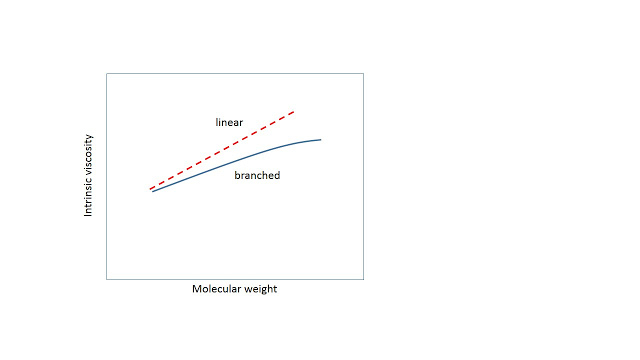Are my polymers branched?

Polymers can be classified as linear or branched. Branched polymers contain chains hanging off the backbone of the polymer, which could include a single side chain or multiple side chains. Linear polymers do not have branches. Branching can strongly influence the processing behavior and ultimate properties of a polymer. In the melt state, branching will increase the melt viscosity of a polymer compared to its linear analog. Branching will also reduce crystallinity in semi-crystalline polymers, as the branches partially inhibits the packing of the polymer chains. Branching can occur during polymerization due to a variety of reasons, including the use of divalent monomers, mixed monomers with different side groups, backbiting during polymerization, radiation grafting, or other reasons. Branching can also occur during processing, particularly if the material undergoes scissioning or further reaction. As a consequence, measurement of branching is important to assess process conditions and ultimate properties in the polymer in question.
Branching can be assessed rheologically, with nuclear magnetic resonance spectroscopy (NMR), and inferred with techniques that monitor end properties such as crystallinity. Detailed information can be determined by triple detection gel permeation chromatography (GPC). In this technique, a polymer is run through a standard GPC column that is equipped with a refractive index detector, a light scattering detector, and a viscometer. The refractive index detector provides information about the concentration of the polymer chains at a given elution time, light scattering provides absolute measurement of the weight-average molecular weight at each elution time, and the viscometer provides the effective density of the polymer chains at each elution time. With these measurements, a Mark-Houwink plot can be generated, as shown below. By comparing the test sample in question to a sample that is known to be a linear polymer, it is possible to assess if the material is branched. For a given molecular weight, a branched polymer will have a smaller volume and hence a reduced viscosity compared to a linear polymer. The amount of deviation from the linear analog is an indication of how much branching there is in the test sample. In this matter, the degree of branching can be calculated for each molecular weight.
